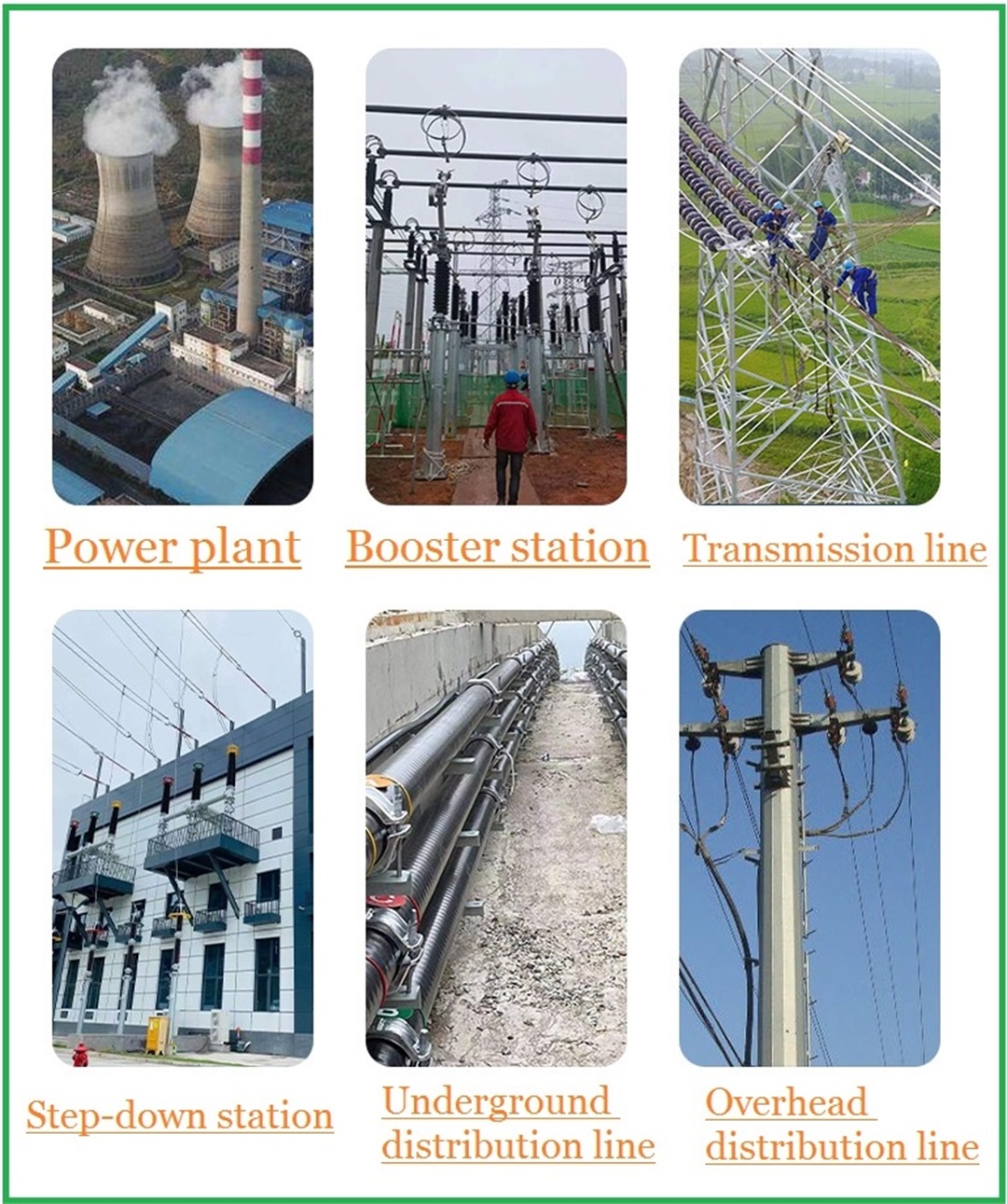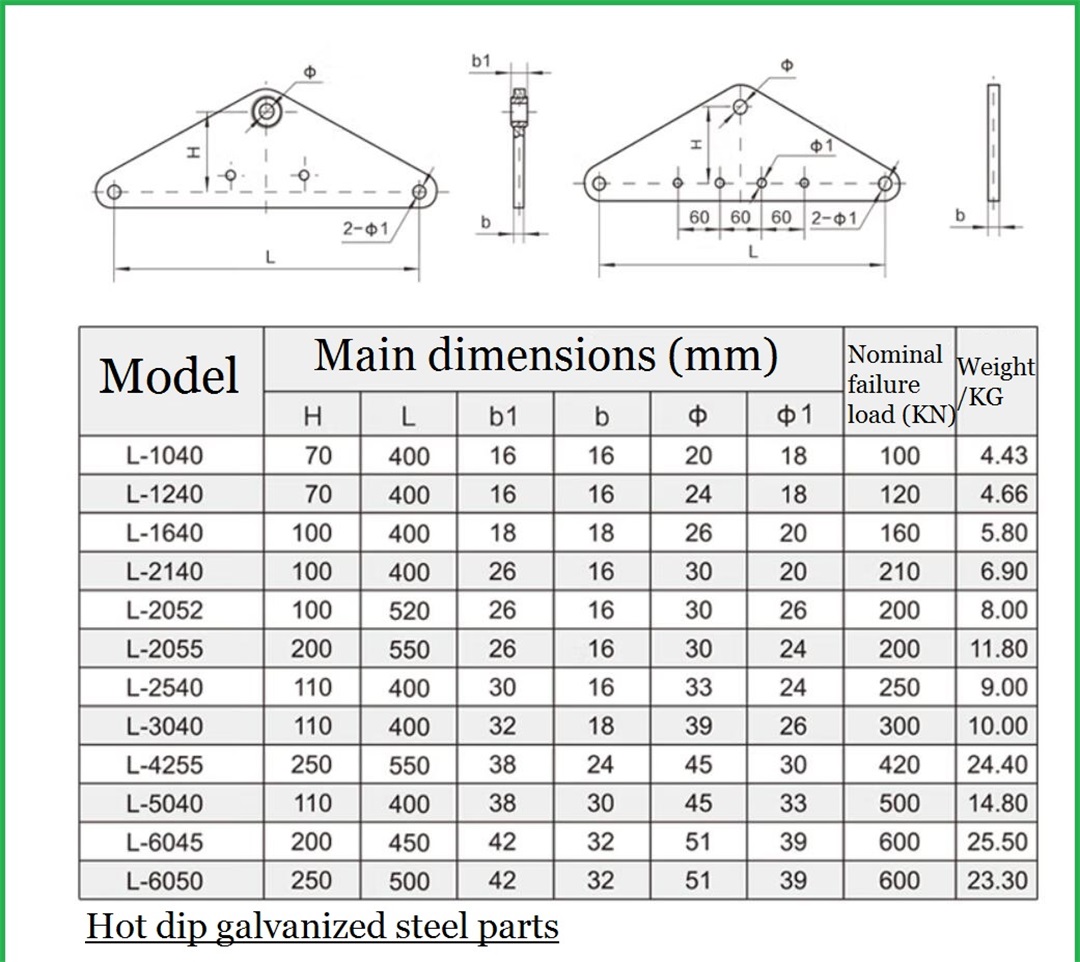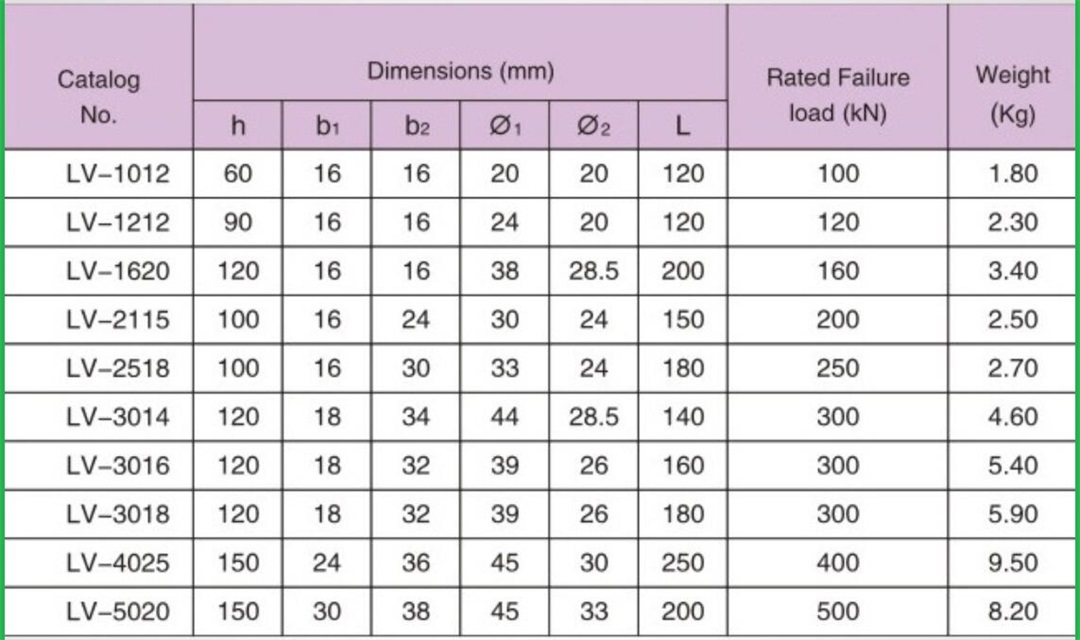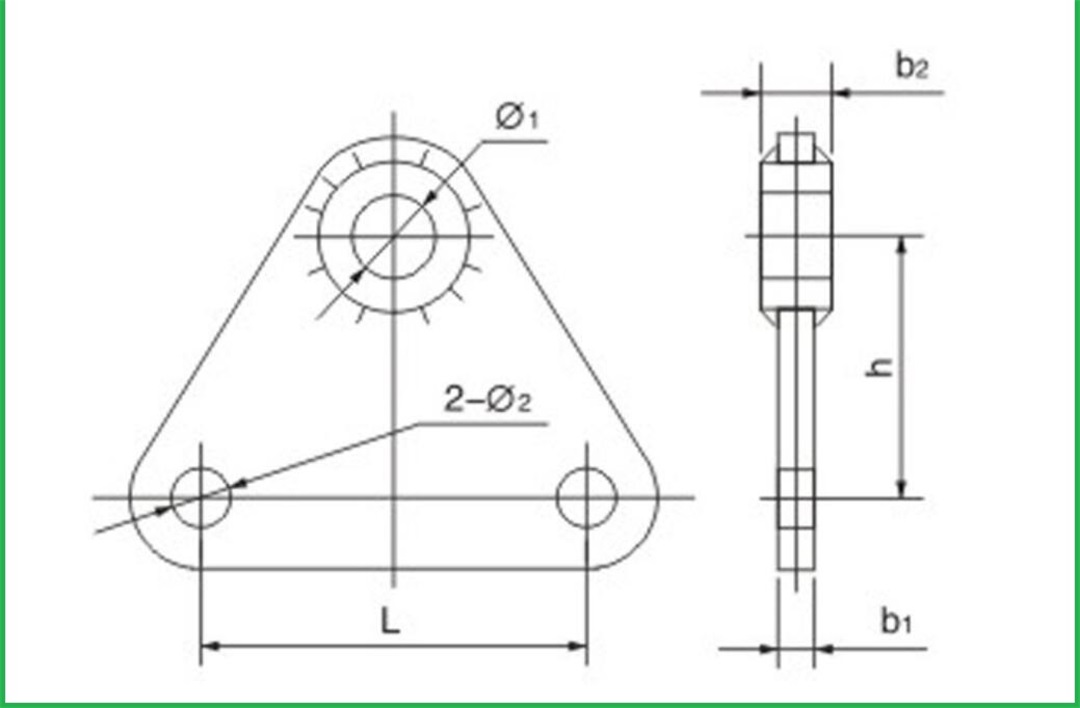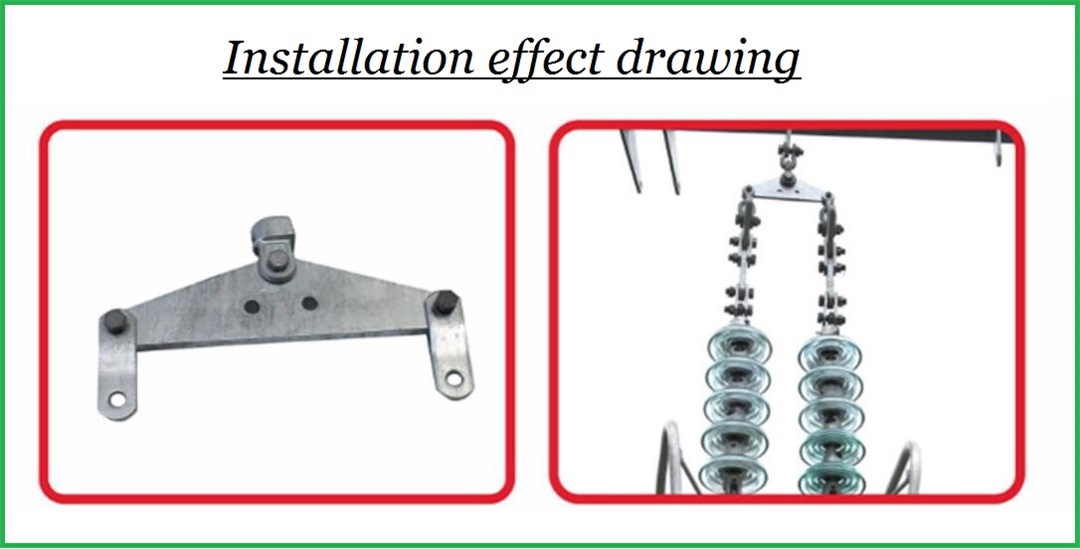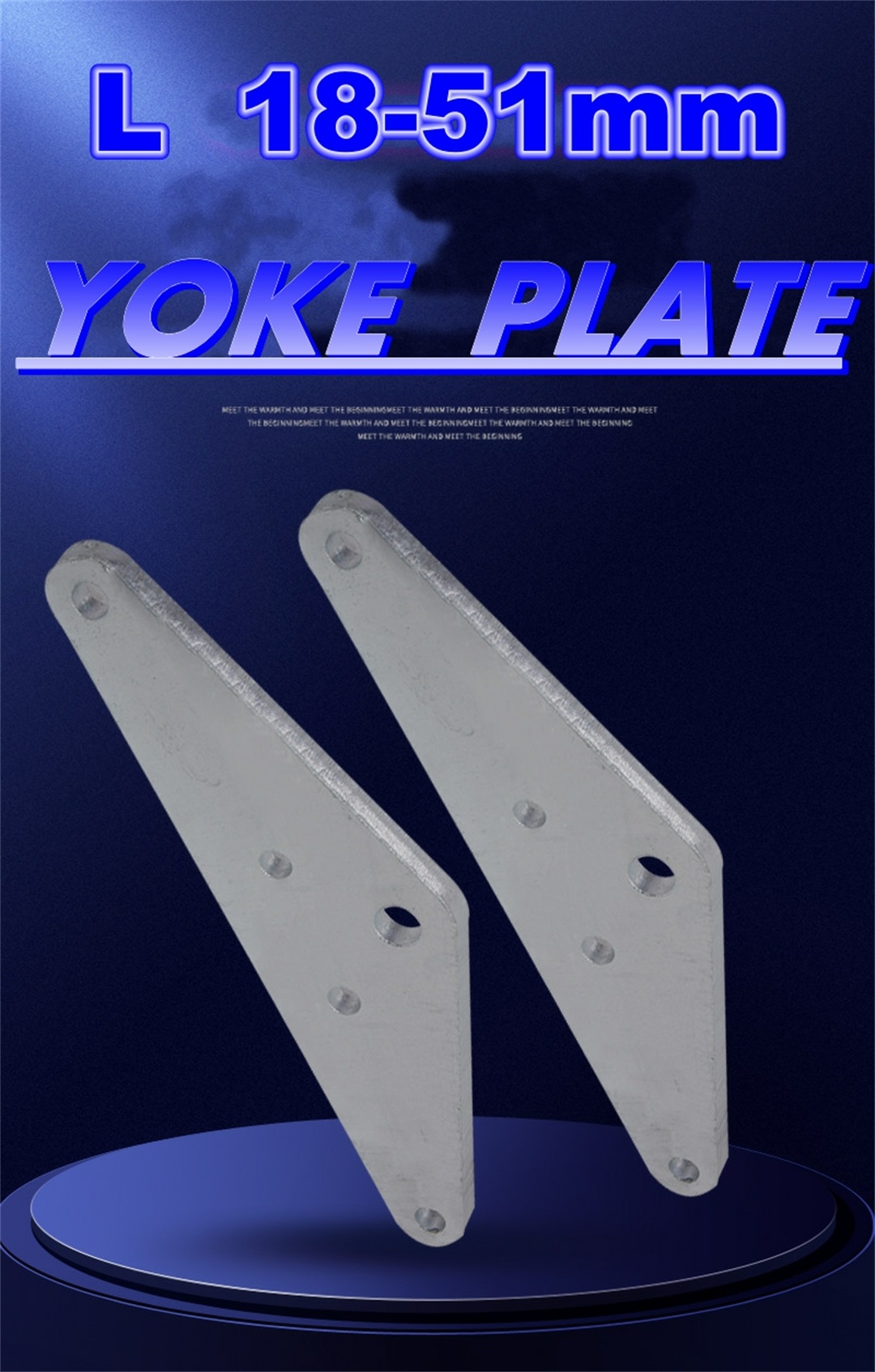L/LV 18-51mm 100-600KN Electric Power link fittings Stay wire adjustment connecting yoke plate of overhead line
Product Description
There are many types of connecting metal, and the connecting plate is one of them. Today we will talk about the L-shaped connecting plate. The L-shaped connecting plate is used on overhead lines to connect insulator strings and wires. The L-shaped connecting plate can also be used to adjust the length of the wire. Since the wires on the overhead line have many strands, the length needs to be adjusted by the L-shaped connecting plate.
The insulator series is divided into double and multi-connection, and the L-shaped board can assemble double-connected insulator strings and parallel connections of multi-connected insulator strings, as well as the assembly of insulator strings with two wires or multiple wires. On the high-voltage overhead line, many strings of insulators are suspended, and the L-shaped connecting plate forms these insulators into strings and hangs them on the tower.
The triangular plate is suitable for assembling multiple strings of suspended insulator strings in overhead power lines and substations, fixing split wires and insulator strings, and connecting multiple stay wires in parallel.
The forms of connecting plates are:
L-type single-series insulators and two-split wire connecting plates or double-series insulators and single-wire connecting plates and triple-connecting plates;
LF type double-series insulators and two-split lead connecting plates; ;
LS-type combined busbars are used for double-connected plates; U-type mounted pressure equalizing rings are used for connecting plates.
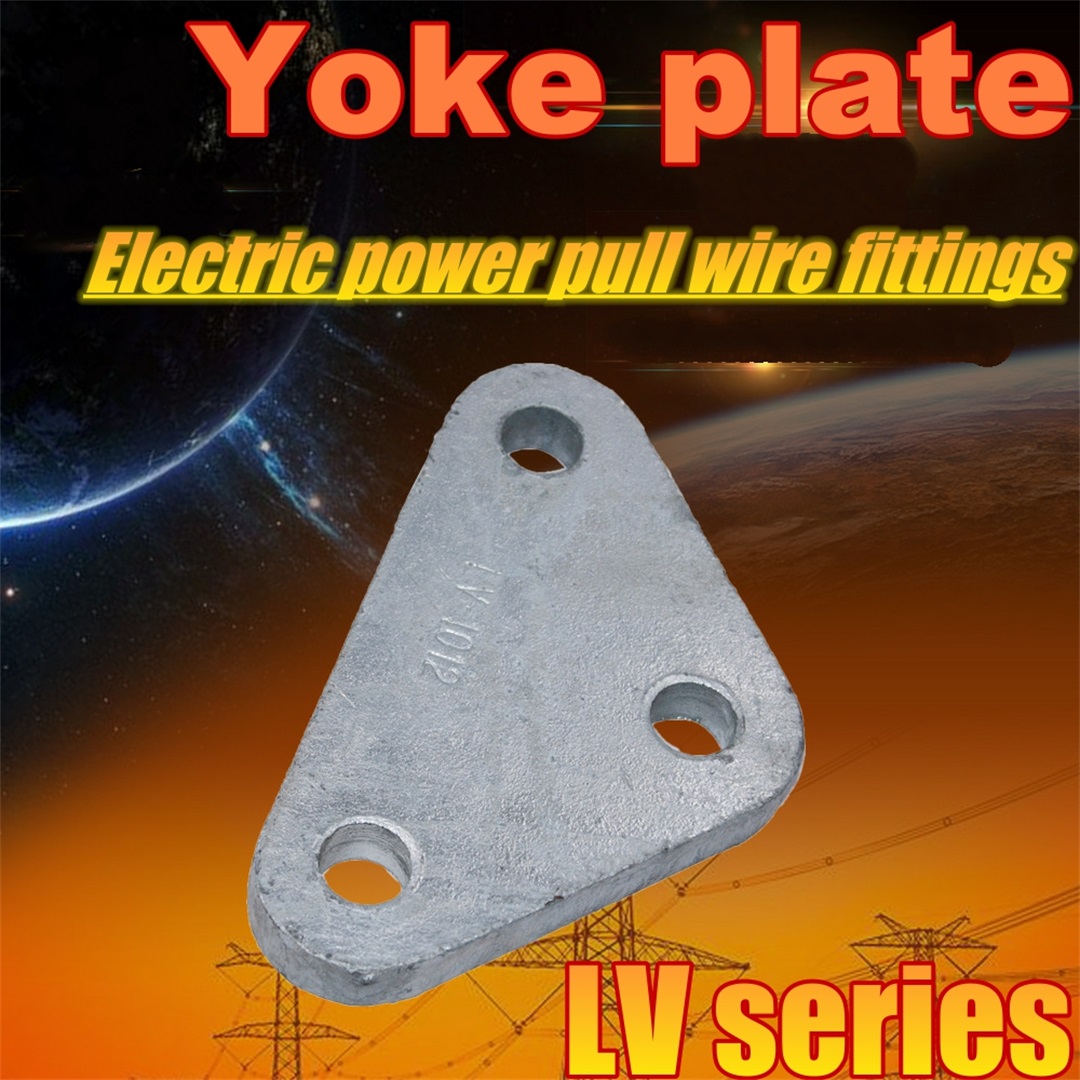
Product features and installation matters
Product features:
1. Accurate processing size, higher than the rated mechanical load
2. Adopt galvanizing process to ensure uniform, smooth and corrosion-resistant zinc layer
3. Simple installation and convenient maintenance
4. Compact structure, beautiful and elegant
L-shaped joint plate assembly Matters needing attention:
1. Pay attention to the direction hole, and coordinate with the cross-arm member of the tower.
2. The compensation length (L=b·sinθ/2) should be considered for the two hanging points.
3. Pay attention to vertical, horizontal and longitudinal loads when selecting U-bolts.
4. It is not advisable to use upper-rod suspension clamps for going up and down hills and crossing crossings.
5. The chemical influence should be considered for the joints of two different metals, and steel-aluminum joints are generally used.
Sixth, the strength should match the large use stress of the wire, especially the first fitting.
7. Pay attention to the cooperation between the ball and the ball socket.
8. When choosing fittings, the damage strength should be considered in the suspension clamp, and the grip strength should be considered in the tensile and splicing fittings.
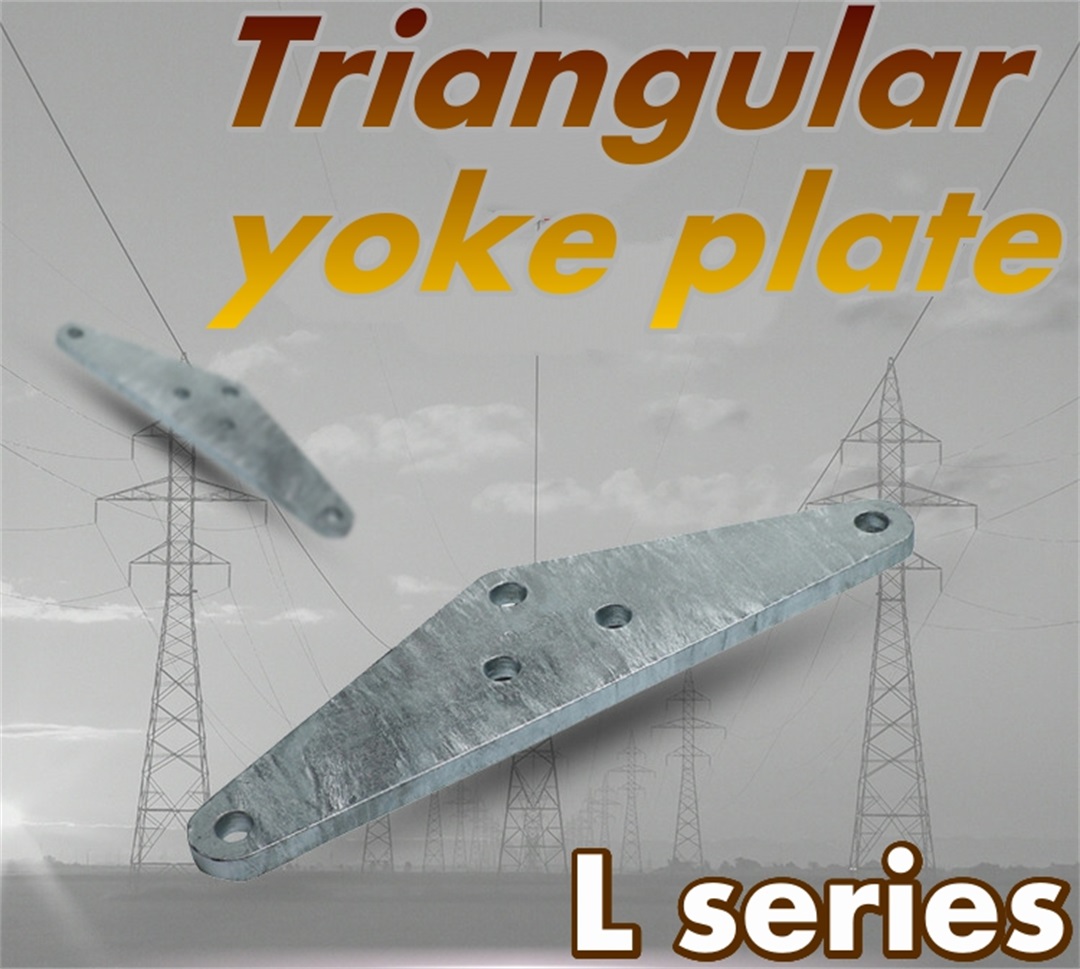
Product details
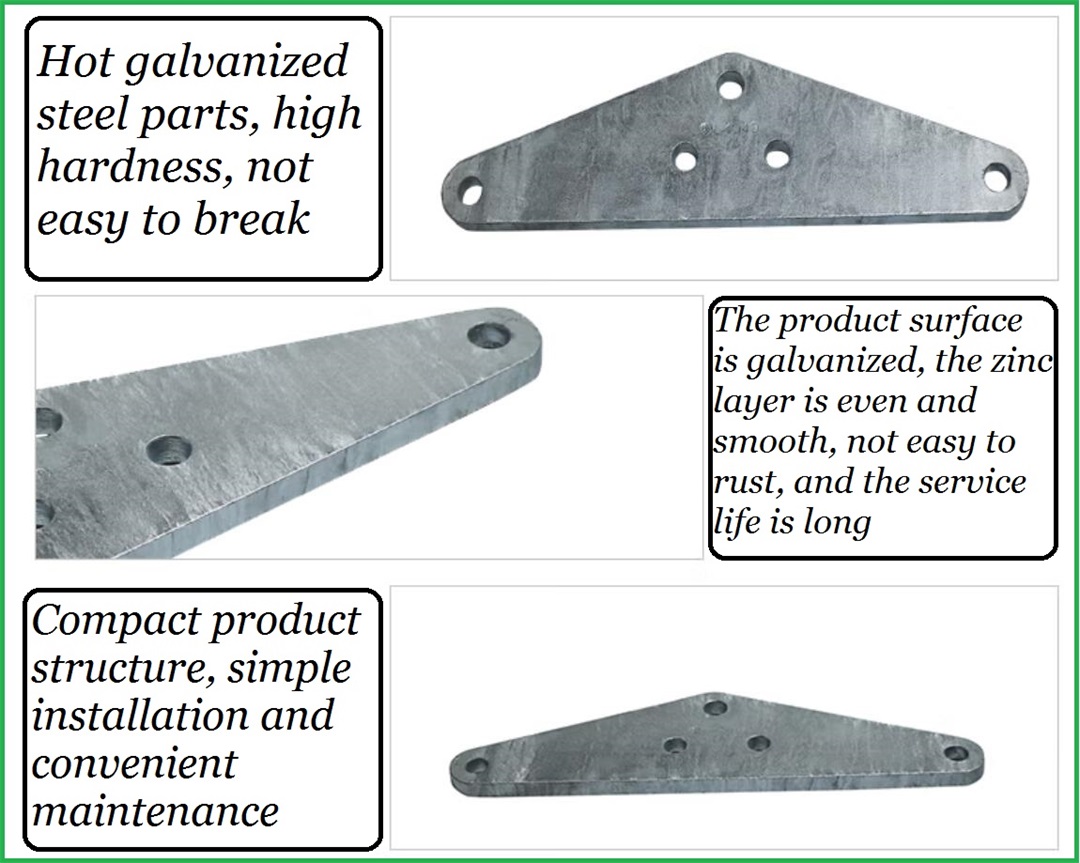
Products real shot
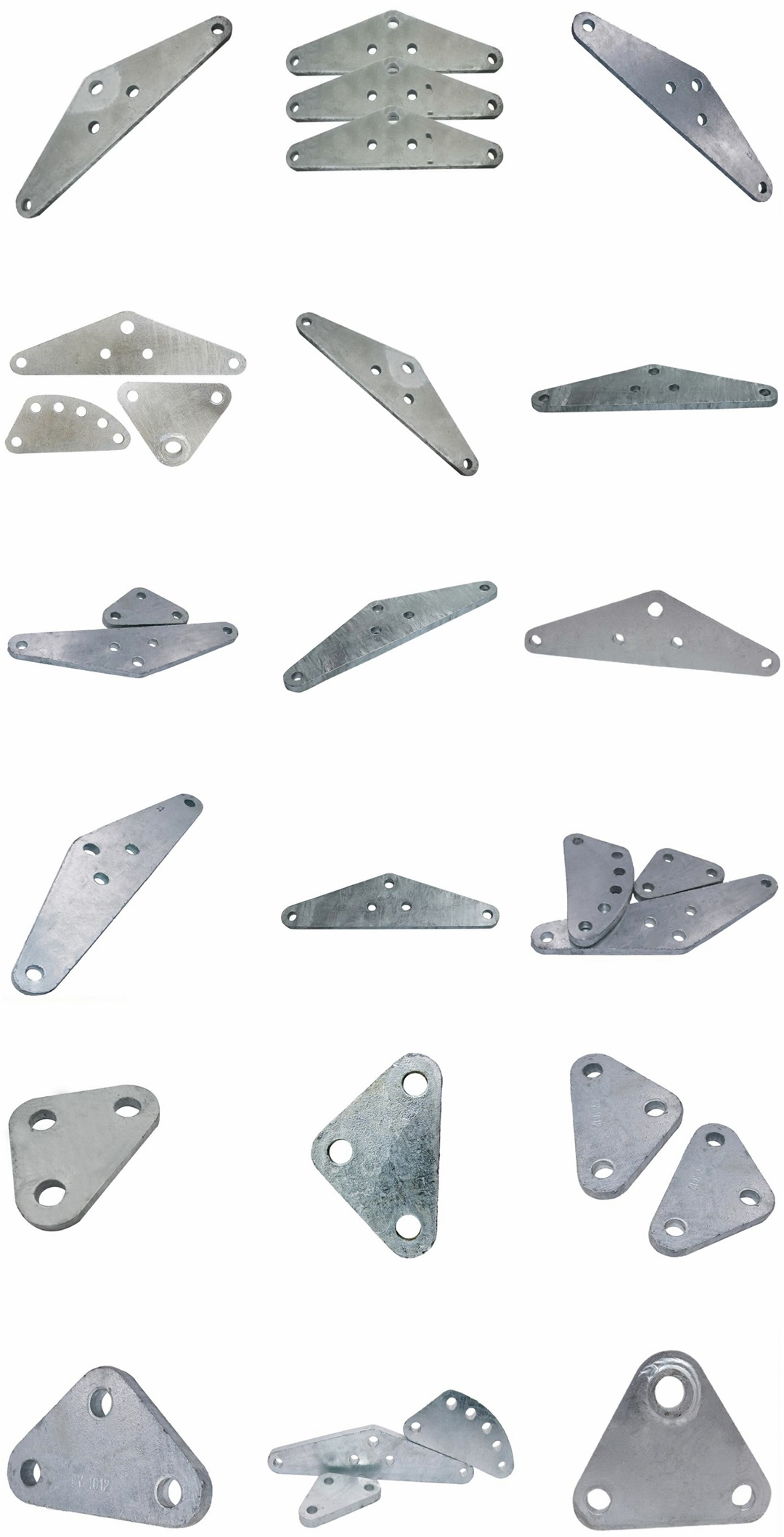
A corner of the production workshop
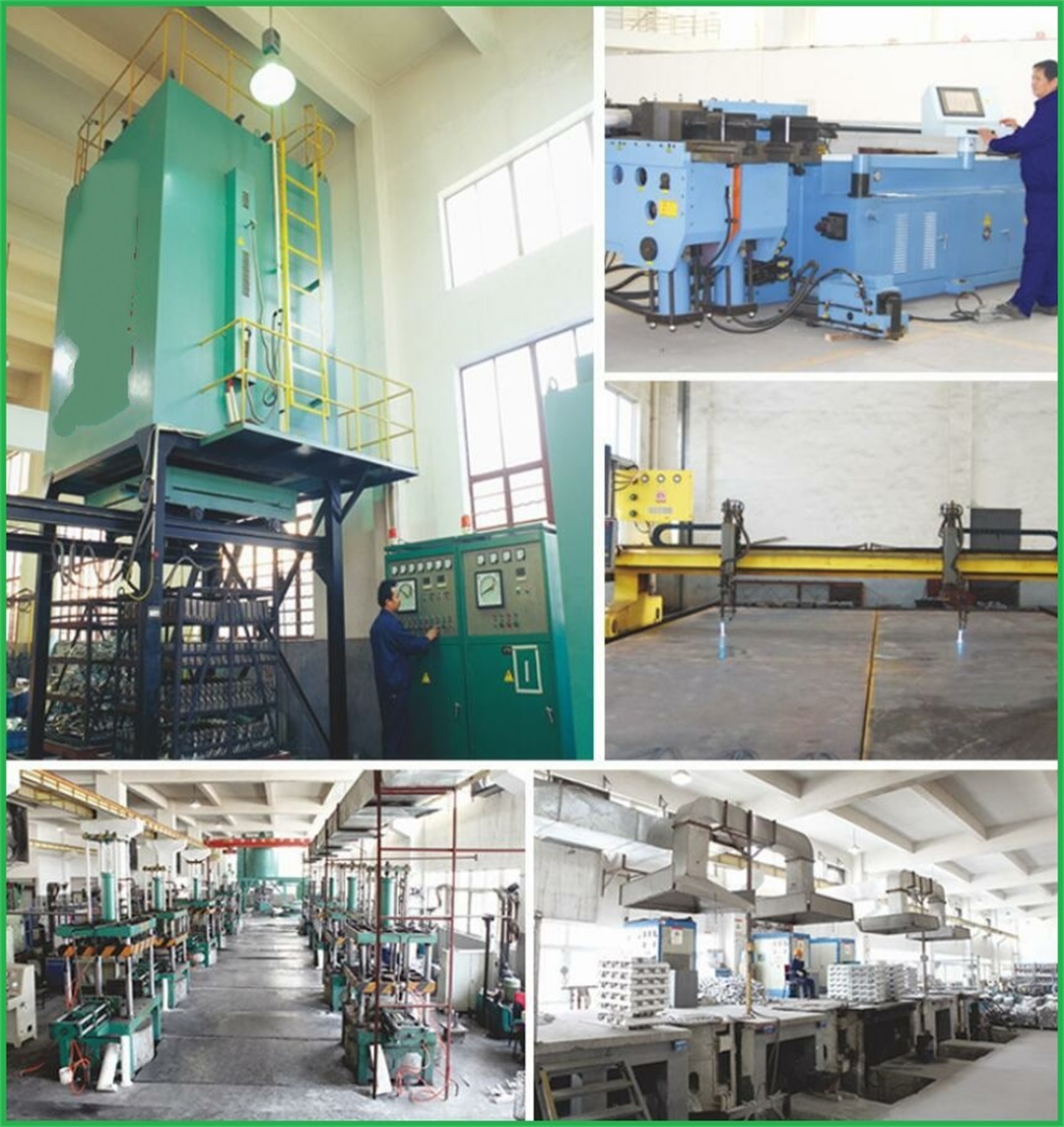
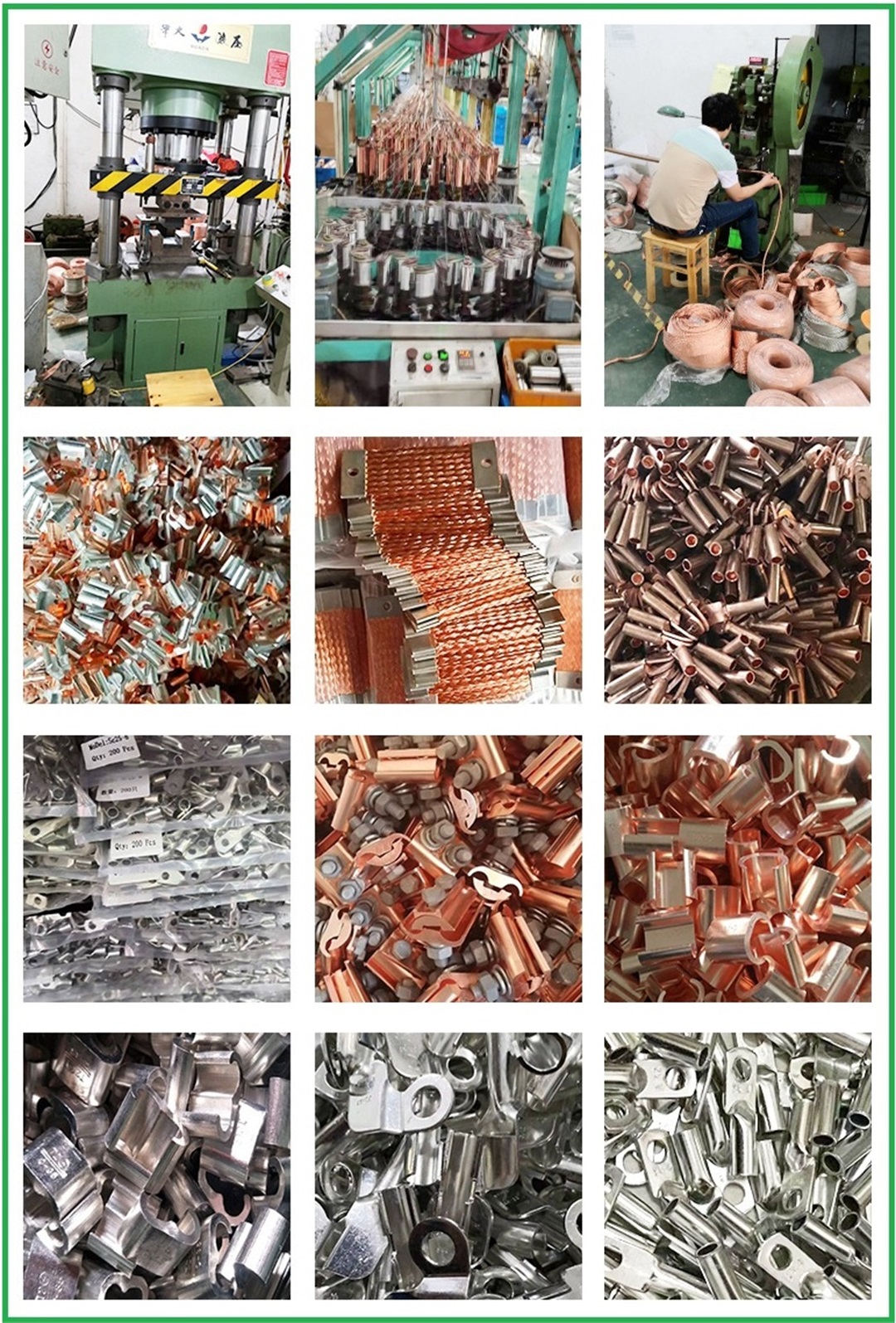
Product packaging
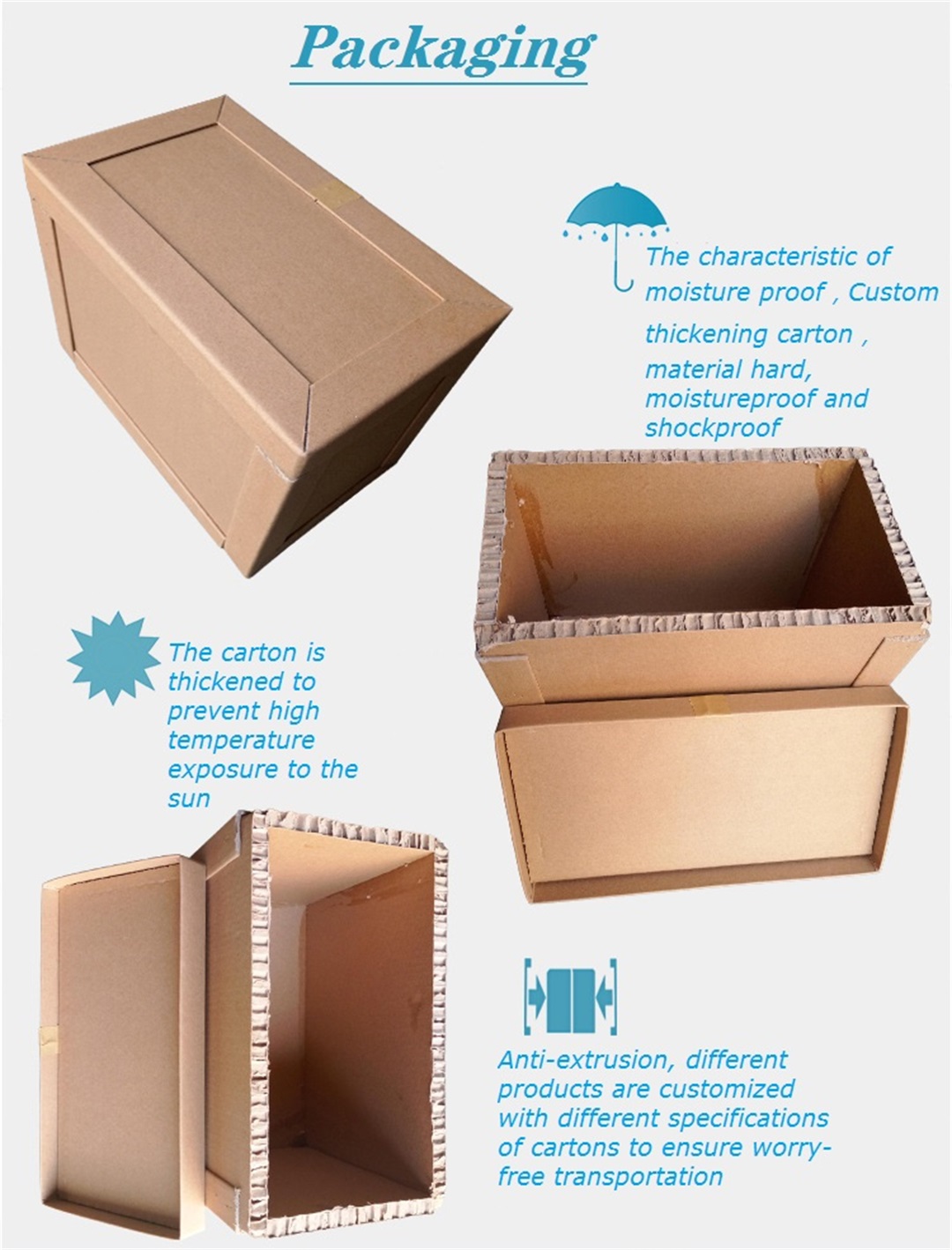
Product application case
